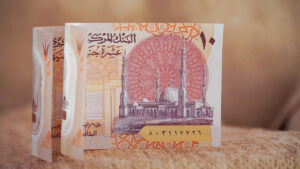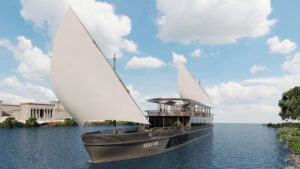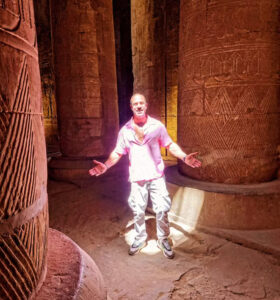Last week at Tarot Tours HQ, we took a break from planning dream journeys to travel somewhere new: the past.
During an internal workshop, someone asked a seemingly simple question: “Where did tourism begin?”
What followed was a brainstorm that turned into a timeline. Then, naturally, that timeline took over the whiteboard wall. By the end, we weren’t just mapping history; we were tracing the human urge to move, to explore, to wonder.
So today, we’re sharing the story we uncovered — not as a history lesson, but as a perspective shift. Because understanding where tourism comes from might just help us imagine where it’s headed.
Act I: When Travel Was for Survival
Before there were passports, there were paths.
Travel began not as leisure but as necessity — for food, for shelter, for safety. Think: early nomadic tribes crossing continents long before borders existed.
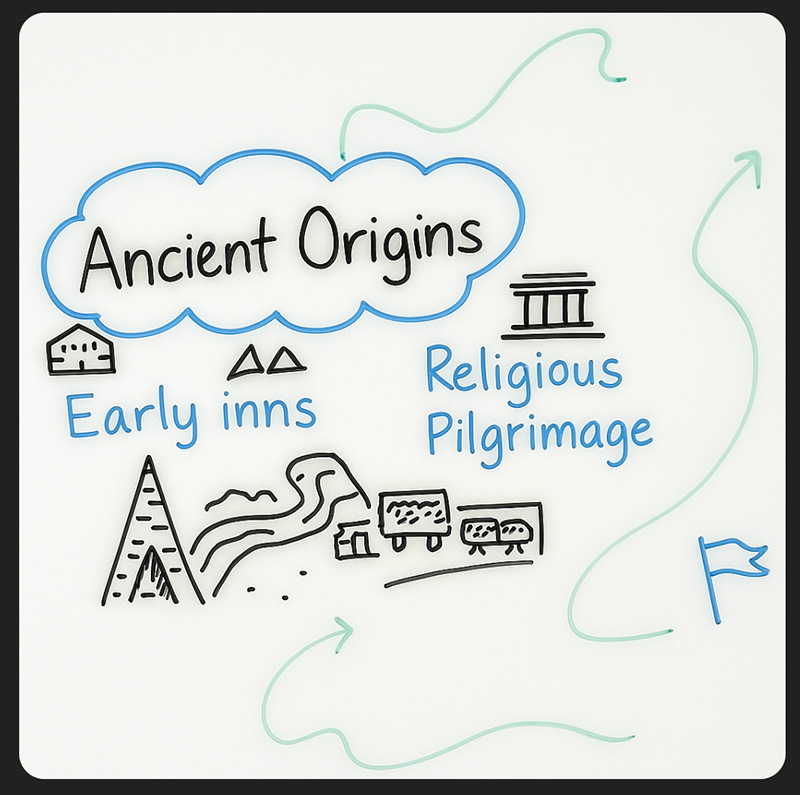
But even then, movement had meaning. It connected people. It exchanged knowledge, goods, languages, and worldviews.
Act II: The Elite Era (When Only the Rich Roamed)
Fast forward to Ancient Egypt, where tombs show evidence of Nile cruises for pleasure.
In Greece, athletes and spectators traveled to attend the Olympic Games.
And in Ancient Rome, the empire’s elite escaped to seaside villas during hot summers — the original holiday homes.
Travel was status.
But it was also storytelling.
The further you went, the more you had to say.
Act III: The Grand Tour & The Rise of Romance
In the 17th and 18th centuries, aristocrats (mostly British) embarked on the “Grand” Tour—extended voyages through Europe to absorb art, culture, and language.
It was part education, part escapism.
Then came Romanticism. Nature became not something to tame but something to feel.
Think poets wandering the Alps and painters losing themselves in the light of the Mediterranean.
Travel became emotional, almost spiritual.
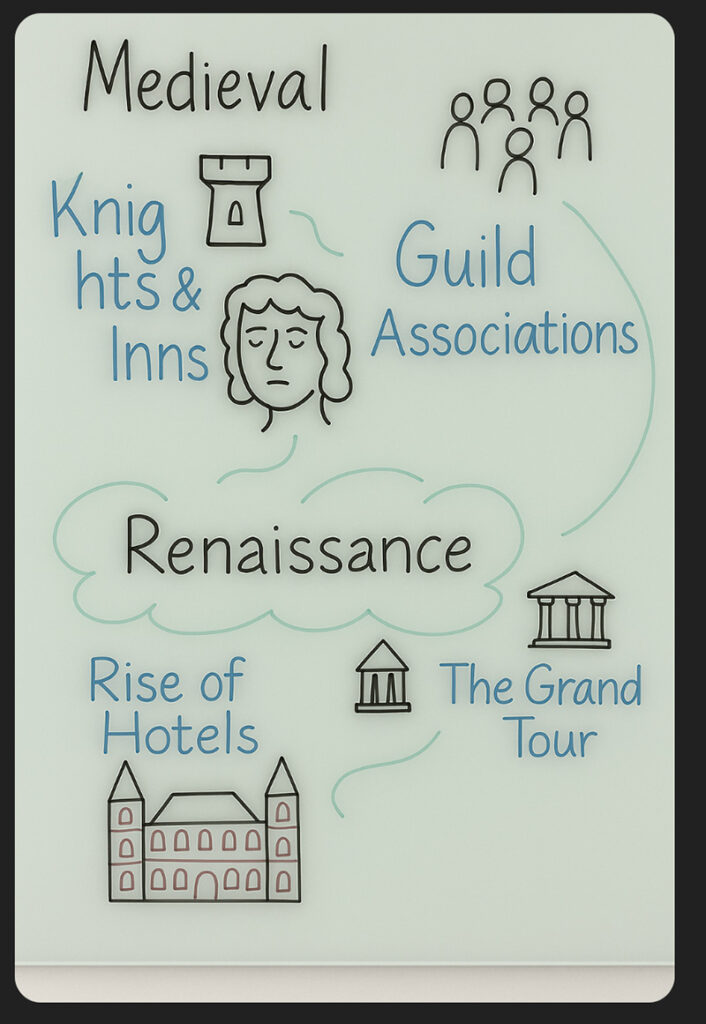
Act IV: Trains, Steamships, and the Birth of Modern Tourism
The Industrial Revolution brought something new: mobility for the masses.
Trains connected cities. Steamships crossed oceans. And suddenly, you didn’t need royal blood to see the world — you needed a ticket and some time.
In 1841, Thomas Cook organized his first group trip by train. By 1855, he was leading organized tours to Paris.
Tourism wasn’t just for the few — it was becoming an industry.
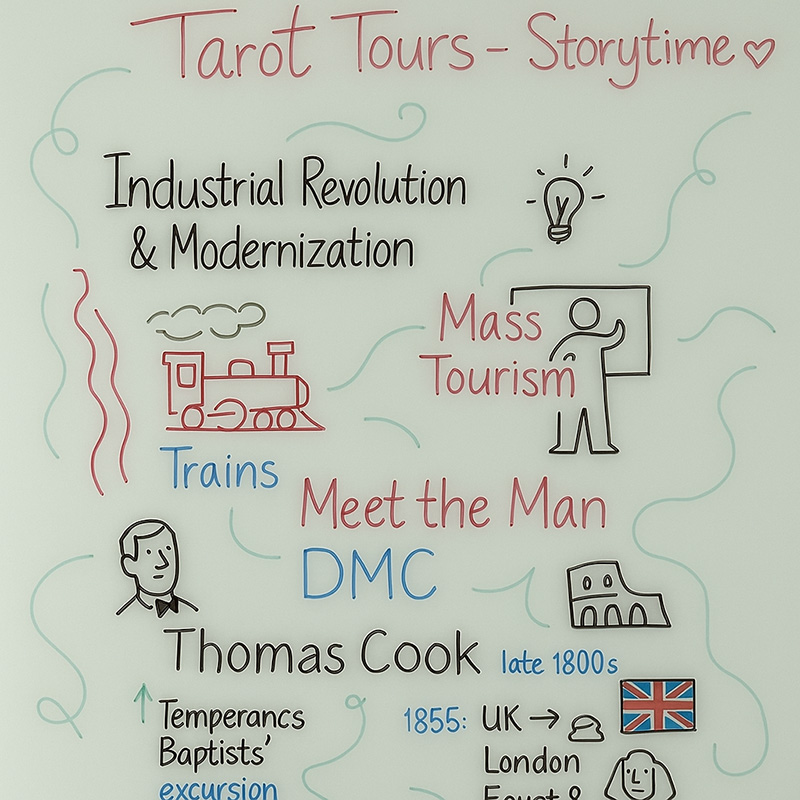
Act V: Golden Ages, Jet Planes & Mass Travel
The 20th century brought civil aviation, beach holidays, and bucket lists.
The post-war boom fueled an appetite for escape (and glossy brochures promised paradise in every corner of the globe).
Tourism exploded.
Economies shifted.
Small towns became global landmarks. And the world, once impossibly big, began to feel astonishingly accessible.
But accessibility came with complexity — questions about sustainability, over-tourism, and authenticity.
Act VI: The Future (That We’re Co-Creating)
At Tarot Tours, we believe we’re entering a new chapter. One where travel is slower, deeper, and more intentional. Less checklist, more connection. Less extractive, more reciprocal.
People no longer want to just see the world — they want to understand it.
They want experiences that change them. That’s why we focus on journeys that are not just beautiful but meaningful.
What the Whiteboard Taught Us
As we stood in front of that hand-drawn timeline (featuring ancient Greeks in togas and a surprisingly detailed sketch of a 1970s travel agent), we realized something:
Tourism is not static. It evolves with us. It reflects who we are, what we value, and how we see the world — and each other.
So yes, we plan travel.
But more than that, we design experiences that join this lineage — from Nile cruises to night trains, from steamships to sacred treks.
Every trip you take is part of that story.
What chapter are you writing next?
Let’s imagine it together.
→ Discover Egypt with Tarot Tours

